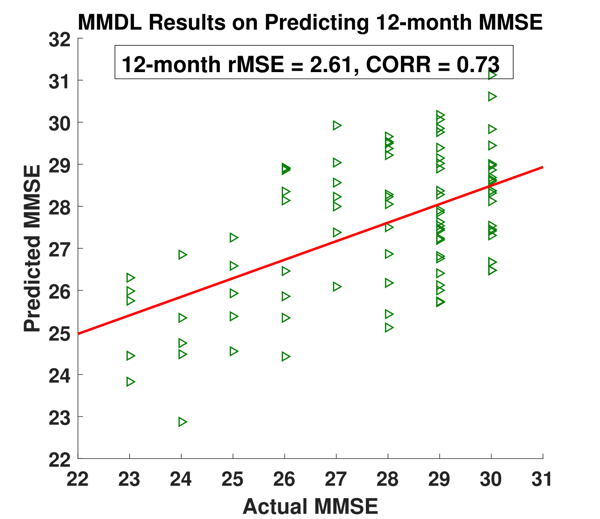Multi-source Multi-target Dictionary Learning for Prediction of Cognitive Decline
Jie Zhang, Qingyang Li, Richard J. Caselli, Paul M. Thompson, Jieping Ye, and Yalin Wang
Abstract
Alzheimer’s Disease (AD) is the most common type of dementia. Identifying correct biomarkers may determine presymptomatic AD subjects and enable early intervention. Recently, Multitask sparse feature learning has been successfully applied to many computer vision and biomedical informatics researches. It aims to improve the generalization performance by exploiting the shared features among different tasks. However, most of the existing algorithms are formulated as a supervised learning scheme. Its drawback is with either insufficient feature numbers or missing label information. To address these challenges, we formulate an unsupervised framework for multi-task sparse feature learning based on a novel dictionary learning algorithm. To solve the unsupervised learning problem, we propose a two-stage Multi-Source Multi-Target Dictionary Learning (MMDL) algorithm. In stage 1, we propose a multi-source dictionary learning method to utilize the common and individual sparse features in different time slots. In stage 2, supported by a rigorous theoretical analysis, we develop a multi-task learning method to solve the missing label problem. Empirical studies on an N = 3970 longitudinal brain image data set, which involves 2 sources and 5 targets, demonstrate the improved prediction accuracy and speed efficiency of MMDL in comparison with other state-of-the-art algorithms.
Figures (click on each for a larger version):
Related Publications
- Jie Zhang, Jie Shi, Cynthia Stonnington, Qingyang Li, Boris A. Gutman, Kewei Chen, Eric M. Reiman, Richard Caselli, Paul M. Thompson, Jieping Ye, Yalin Wang, Hyperbolic Space Sparse Coding with Its Application on Prediction of Alzheimer’s Disease in Mild Cognitive Impairment, International Conference on Medical Image Computing and Computer-Assisted Intervention MICCAI 2016: Medical Image Computing and Computer-Assisted Intervention-MICCAI 2016 pp 326-334






